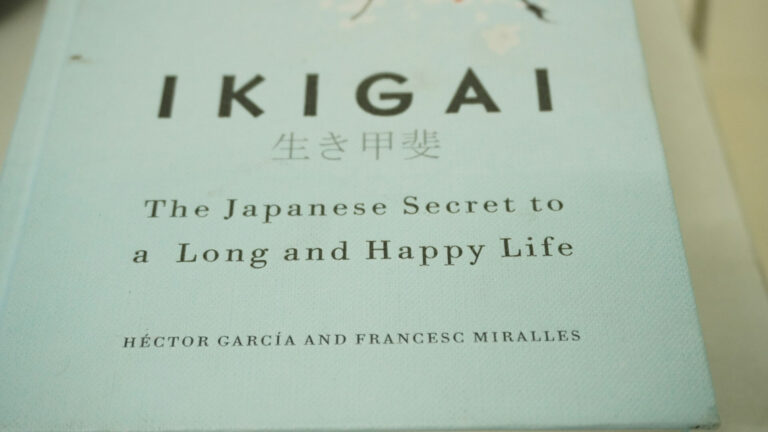
Creativity is not just for artists, writers, or musicians. It’s a skill that everyone can develop and use in their daily lives. Whether you’re solving problems at work, coming up with new ideas for a project, or simply trying to think outside the box, having a creative mindset can make a huge difference. But how do you develop a creative mindset? In this blog, we’ll explore practical steps and strategies to help you unlock your inner genius and think more creatively.
What Is a Creative Mindset?
Before we dive into how to develop a creative mindset, let’s first understand what it means. A creative mindset is a way of thinking that allows you to see possibilities, generate new ideas, and approach challenges in innovative ways. It’s about being open to new experiences, embracing curiosity, and not being afraid to take risks.
People with a creative mindset often:
- Think outside the box
- Embrace uncertainty
- Are willing to experiment
- See failures as learning opportunities
- Stay curious and ask questions
Now that we know what a creative mindset is, let’s explore how you can develop one.
How to Develop a Creative Mindset
Embrace Curiosity
Curiosity is the foundation of creativity. When you’re curious, you ask questions, explore new ideas, and seek out new experiences. To develop a creative mindset, start by embracing your curiosity.
Here are a few ways to do that:
- Ask questions: Don’t be afraid to ask “why” or “how.” The more questions you ask, the more you’ll learn and discover.
- Explore new hobbies: Try something you’ve never done before, like painting, cooking, or learning a new language.
- Read widely: Expose yourself to different topics, genres, and perspectives. The more you know, the more connections you can make.
Surround Yourself with Inspiration
Your environment plays a big role in shaping your mindset. If you want to develop a creative mindset, surround yourself with things that inspire you.
Here’s how:
- Create a creative space: Whether it’s a corner of your room or a dedicated workspace, fill it with things that spark your imagination, like books, art, or plants.
- Spend time in nature: Nature has a way of calming the mind and inspiring creativity. Take a walk in the park, go hiking, or simply sit outside and observe.
- Connect with creative people: Spend time with people who inspire you and challenge you to think differently.
Practice Mindfulness
Mindfulness is the practice of being fully present in the moment. It helps you clear your mind, reduce stress, and focus on what’s important. When you’re mindful, you’re more open to new ideas and experiences, which is essential for developing a creative mindset.
Here are some mindfulness practices to try:
- Meditation: Spend a few minutes each day meditating. Focus on your breath and let go of distracting thoughts.
- Journaling: Write down your thoughts, ideas, and feelings. This can help you process your emotions and spark new ideas.
- Deep breathing: Take a few deep breaths when you feel stressed or stuck. This can help you relax and think more clearly.
Take Risks and Embrace Failure
One of the biggest barriers to creativity is the fear of failure. But the truth is, failure is a natural part of the creative process. To develop a creative mindset, you need to take risks and be willing to fail.
Here’s how to embrace failure:
- Shift your perspective: Instead of seeing failure as something negative, see it as a learning opportunity. Every mistake teaches you something new.
- Start small: Take small risks to build your confidence. For example, try a new recipe or experiment with a new idea at work.
- Celebrate effort: Focus on the effort you put in, not just the outcome. Even if you fail, you’ll gain valuable experience.
Make Time for Play
Play is not just for kids. It’s a powerful tool for developing a creative mindset. When you play, you let go of rules and expectations, which allows your mind to wander and explore new possibilities.
Here are some ways to incorporate play into your life:
- Play games: Board games, puzzles, or even video games can stimulate your brain and spark creativity.
- Doodle or draw: You don’t have to be an artist to enjoy drawing. Doodling can help you relax and come up with new ideas.
- Be silly: Don’t take yourself too seriously. Laugh, joke, and have fun.
Challenge Yourself
Comfort zones are creativity killers. To develop a creative mindset, you need to challenge yourself and step outside your comfort zone.
Here’s how:
- Set creative goals: Challenge yourself to learn a new skill, complete a creative project, or solve a problem in a new way.
- Try new things: Do something you’ve never done before, like traveling to a new place or trying a new type of food.
- Push your limits: Take on tasks that feel difficult or intimidating. The more you challenge yourself, the more you’ll grow.
Practice Divergent Thinking
Divergent thinking is the ability to generate multiple solutions to a problem. It’s a key component of creativity. To develop a creative mindset, practice divergent thinking regularly.
Here’s how:
- Brainstorm: Set a timer and write down as many ideas as you can. Don’t judge or filter your ideas—just let them flow.
- Ask “what if” questions: Challenge assumptions and explore different scenarios. For example, “What if we could travel back in time?” or “What if everyone could fly?”
- Combine ideas: Take two unrelated ideas and try to combine them into something new. For example, what would a car and a boat look like if they were combined?
Take Breaks and Rest
Creativity doesn’t thrive under pressure. Sometimes, the best way to develop a creative mindset is to take a break and give your mind time to rest.
Here’s why rest is important:
- It boosts creativity: When you rest, your brain processes information and makes connections, which can lead to new ideas.
- It reduces stress: Stress can block creativity. Taking breaks helps you relax and think more clearly.
- It improves focus: Resting allows you to recharge and come back to your work with fresh energy.
So, don’t feel guilty about taking breaks. Whether it’s a short walk, a nap, or a weekend getaway, rest is essential for creativity.
Keep a Creative Journal
A creative journal is a place where you can jot down ideas, sketches, and thoughts. It’s a great tool for developing a creative mindset because it helps you capture and organize your ideas.
Here’s how to use a creative journal:
- Write daily: Spend a few minutes each day writing down your thoughts, ideas, or observations.
- Sketch or doodle: Use your journal to draw or doodle. You don’t have to be an artist—just let your imagination flow.
- Reflect: Look back at your journal regularly to see how your ideas have evolved.
Stay Persistent
Developing a creative mindset takes time and effort. There will be days when you feel stuck or uninspired, but that’s normal. The key is to stay persistent and keep going.
Here’s how to stay motivated:
- Set small goals: Break your creative projects into smaller, manageable tasks. This will make them less overwhelming.
- Celebrate progress: Acknowledge and celebrate your achievements, no matter how small.
- Stay positive: Focus on what you’ve learned and how far you’ve come, rather than what you haven’t achieved yet.
Final Thoughts
Developing a creative mindset is not about being born with talent—it’s about cultivating the right habits and attitudes. By embracing curiosity, surrounding yourself with inspiration, practicing mindfulness, and taking risks, you can unlock your inner genius and think more creatively.
Remember, creativity is a journey, not a destination. Keep experimenting, learning, and growing, and you’ll find that your creative mindset will continue to evolve. So, start today and take the first step toward becoming a more creative and innovative version of yourself!
By following these tips and strategies, you’ll not only develop a creative mindset but also enjoy the process of discovering new ideas and possibilities. Happy creating!



